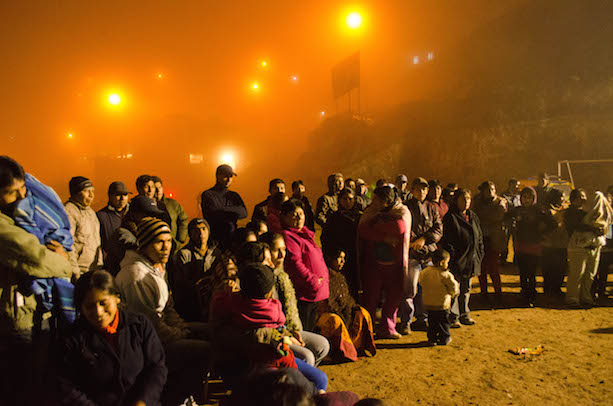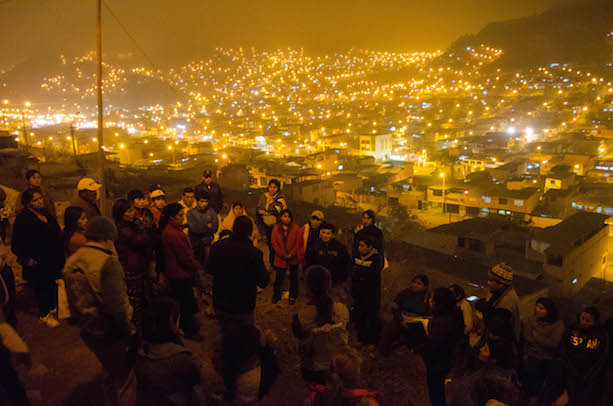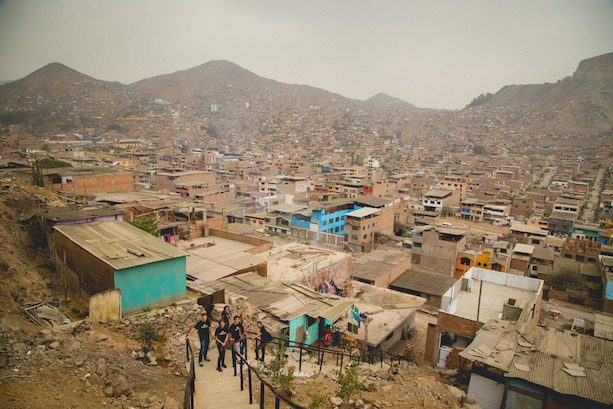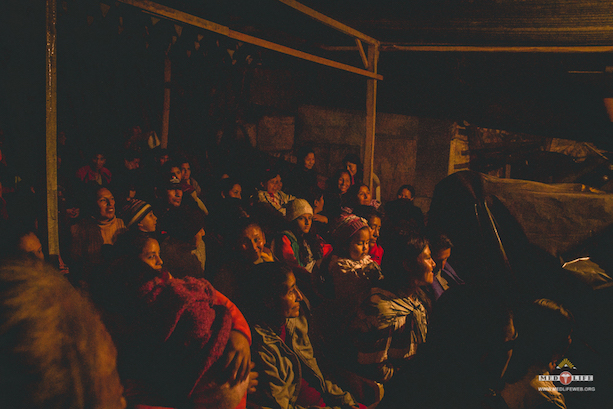We stood on the hillside over looking the valley in Nueva Esperanza, a community on the outskirts of Lima where MEDLIFE works. Hundreds of tiny orbs of light spread out across the valley below us, floating in the mist that thickened the air. This was the first time this group of interns had been into the hills at night. There was a tangible sense of excitement in the air around us; we didn’t know what to expect from the community we were about to meet.
But it was refreshing to stand on that hillside breathing the brisk, wet air; it was refreshing to see something so beautiful in the pueblos jovenes, even if it sharply contrasted the stark poverty that went on as far as the eye could see.
During the daytime when the deplorable living conditions here are in full view, most would not describe the pueblos jovenes as beautiful. Pueblos Jovenes are the slums in the hills surrounding Lima. During the day, it was hard to imagine that the surreal beauty I saw at night would emerge with the darkness at sundown.
They are a maze of disorganized shacks and dirt paths spread across the hillsides; there is no city planning here. The slippery, steep dirt paths are coated in the feces of the countless stray dogs, perpetually chasing the mysteriously clean cats that somehow manage to find something to live on even when there is so little for the people here.
We are in the community of Virgen De Candelaria, waiting for a meeting to start about the construction of a staircase. Pueblo Joven translates to young town, and Virgen De Candelaria is literally that. People settled at the base of the hill 60 years ago, and the people near the top of the hill have been there for only about 15 years.
In the late 1940’s a rapid influx of migrants from other parts of Peru settled here and made do with what they had- basically nothing. Most of them still don’t even own the land they live on. The name of the district, Nueva Esperanza, New Hope in English, reflects the reason people came.
However, the name is ironic, based on the informal nature of their settlement, pueblos jovenes like Virgen de Candelaria of the places we work lack the basics: access to clean water, sanitation, education, lighting, a safe community infrastructure, all of the ingredients necessary to put together a community, all the things needed to put together a community. Each of the places we work is missing something different, all of them are missing a lot.
Best-selling books and academic literature are riddled with examples of how aid that is not specifically targeted to engage a community and to meet their needs is ineffective at best, and oftentimes harmful.
How do we make sure we are giving communities what they actually need, and not what we think they need?
On the dark hillside in Nueva Esperanza, we were about to see a critical part of the process that MEDLIFE uses to engage communities.
…
We walked in, there were about fifty people seated in the open-air shack under a corrugated iron roof. We stand in front of the audience and introduce ourselves, all 14 of us.
While the community member who is running the proceedings speaks with a megaphone and a sheet of paper for reference, Carlos addresses the audience using only his voice, cutting through the interference of crying infants and reactionary murmuring, maintaining constant eye contact. Carlos is the director of Med Programs- he has done this countless times.
He finds the need for, and coordinates MEDLIFE’s projects along with the help of our community leaders. Community meetings are a critical step in any project that affects the community at large. He explains what MEDLIFE does since this is our first project in this community apart from the recent mobile clinic and not everyone knows who we are.
Mobile clinics are often used as a test of community organization and participation before a project. If enough people do not show up at a clinic, MEDLIFE will not move forward a project. Participation was good enough at our mobile clinic in Virgen De Candelaria to move forward, but not great. Carlos tells the audience he is going to need greater participation for the staircase. Carlos said that the most important thing before any project “is too converse and coordinate with the people and to come into agreement.”
Carlos asked for people to stand and share their opinions on the project.
One women rose and described the dangers and difficulties of the climb up the loose hillside. “It’s a great idea,” she said. “Especially for the children when it rains. I don’t care if we have to work all day from Monday to Friday, we can do it.”
Everyone else seemed in agreement, the staircase was a good idea. The congregation agreed to work on the project, the men would carry the construction materials up at night, and the women would help with construction during the day.
They thanked us profusely and served us hot chocolate. It was delicious, and to our pleasant surprise, did not make us sick.
The meeting was a success- the community was taking ownership of the project and had committed to working on it alongside MEDLIFE, not just receiving it. If MEDLIFE cannot get this kind of support, we don’t move forward with a project. If the need isn’t great enough for the community to want to help, we probably aren’t working on the right project. When the community engages with us on a project, we help them move themselves forward.




